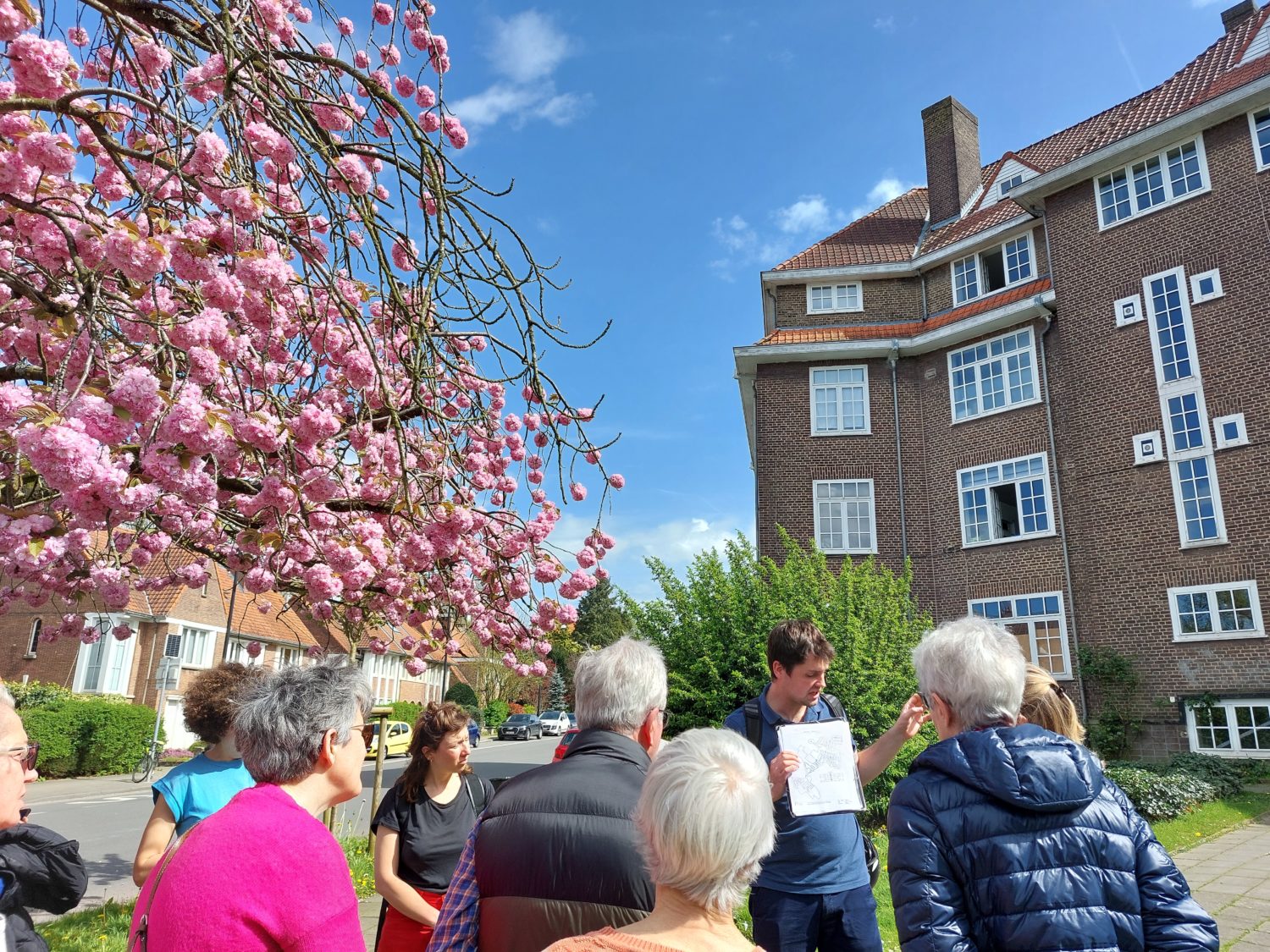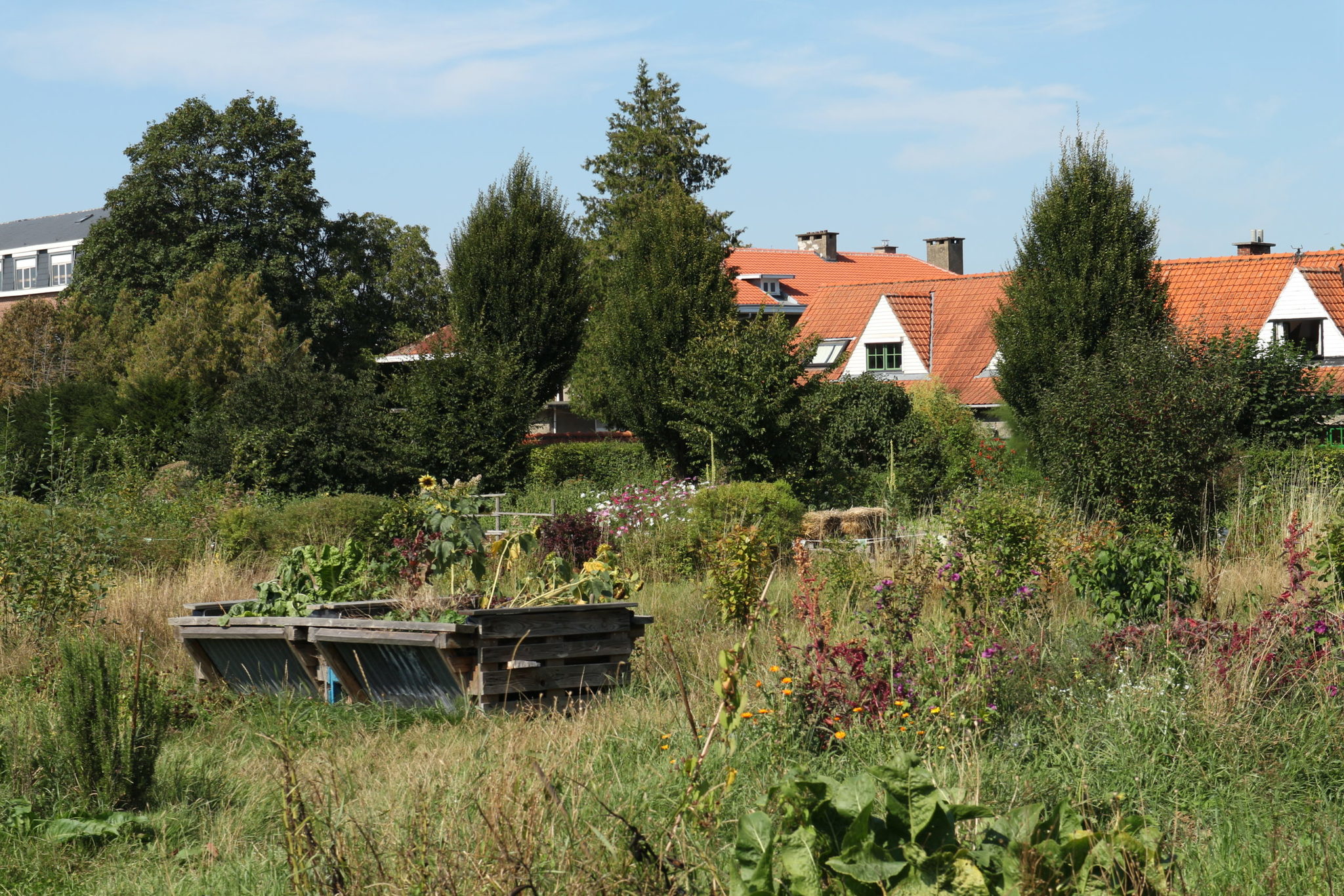Living in the Logis-Floréal
I would like to book a guided tour
The original concept of the garden suburb was to offer a form of nourishment to its residents...
Set up a guided tour for a group
The twin garden suburbs of Le Logis and Floréal, with their 1,500 dwellings are the biggest affordable housing project built in Belgium in the inter-war period. Their construction was permitted by the progressive Law of 1919, which created the National Company for Affordable Houses and Dwellings (Société nationale des Habitations et Logements à Bon Marché) and was done by two self-build co-operatives, including a group of typesetters from the “Le Peuple” newspaper. The garden suburb movement was imported to Belgium from England, where many Belgian architects, including Jean-Jules Eggericx, the overall co-ordinator of Le Logis-Floréal, trained during the First World War. It was an incubator of new forms and construction methods and referred to an ideal that was simultaneously rural and individualist, and which relied on the solidarity of the co-operatives’ members. The new lifestyle it offered brought together standardisation and the picturesque, which would prove the key to its success.

The original concept of the garden suburb was to offer a form of nourishment to its residents. This was redeveloped at the Ferme du Chant des Cailles (Quails’ Song Farm), a temporary installation on public land earmarked for the construction of houses. Today, there remains tension between the functions of urban agriculture and housing: while the demand for affordable housing has never been as high, the importance of open spaces and low food miles cannot be denied in this era of climate change.
Duration: 2 hours
Place of departure: At the corner of avenue des Ortolans et de la rue du Pinson, 1170 Brussels
